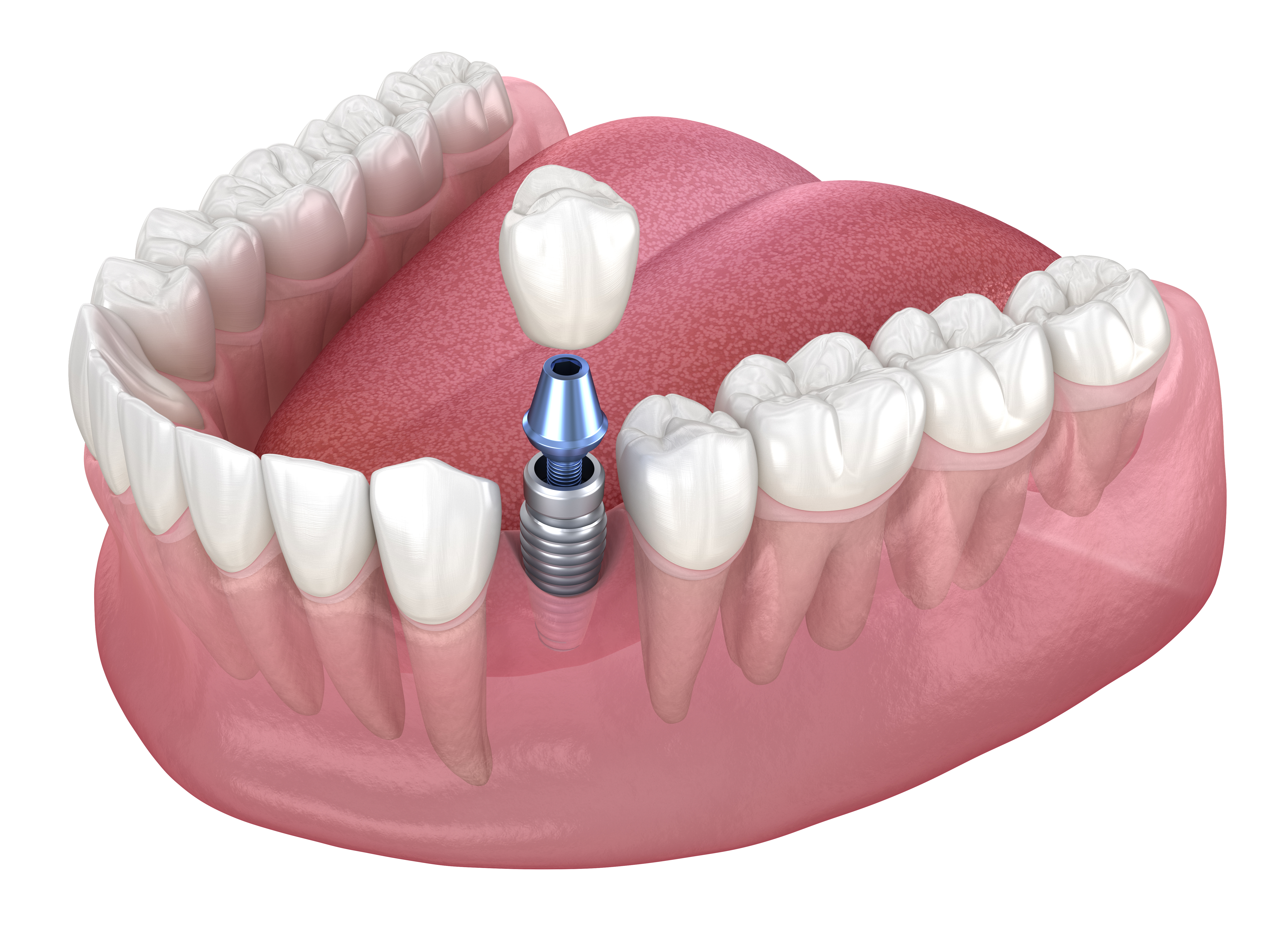Discover the Future of Dental Implants: Screwless Solutions Redefining Comfort
The dental implant industry is experiencing a revolutionary transformation with the introduction of screwless dental implants, offering patients a more comfortable and efficient alternative to traditional screw-in procedures. These innovative solutions eliminate many complications associated with conventional implants while providing the same durable, long-lasting results that restore both function and aesthetics to your smile.

Dental implants have long been considered the gold standard for replacing missing teeth, providing patients with functional and aesthetic solutions that closely mimic natural teeth. Traditional implant systems typically rely on screws to secure prosthetic components, but emerging screwless technologies are changing this paradigm. These innovative approaches promise enhanced comfort, simplified procedures, and improved long-term outcomes for patients seeking dental restoration solutions.
What Are Screwless Dental Implants?
Screwless dental implants represent an evolution in implant dentistry that eliminates the need for screws to attach the crown or prosthetic tooth to the implant base. Instead of the conventional screw-retained design, these systems utilize alternative connection mechanisms such as friction-fit, snap-on attachments, or conical connections that lock prosthetic components securely in place.
The fundamental difference lies in how the visible portion of the tooth replacement connects to the titanium post embedded in the jawbone. Traditional systems use a small screw that passes through the crown into an abutment, which can create stress points and potential complications. Screwless systems distribute forces more evenly across the implant-prosthetic interface, potentially reducing mechanical failures and improving long-term stability.
These innovative implants also address common issues associated with screw-based systems, including screw loosening, micro-gaps that can harbor bacteria, and access holes in the crown that may compromise aesthetics and structural integrity.
How Does the Screwless Implant Procedure Work?
The screwless implant procedure follows many of the same initial steps as traditional implant placement. First, the dentist or oral surgeon evaluates the patient’s oral health, bone density, and anatomical considerations through comprehensive examination and imaging. Once deemed a suitable candidate, the patient undergoes the surgical placement of the titanium implant post into the jawbone.
Where the procedure diverges is in the connection mechanism. After the healing period (typically 3-6 months) during which the implant integrates with the bone through osseointegration, the dentist attaches a specially designed abutment to the implant. This abutment features a unique locking mechanism that allows the final restoration to be secured without screws.
The crown or prosthetic tooth is then fabricated with a corresponding connection interface that aligns precisely with the abutment. During the final appointment, the restoration is simply pressed onto the abutment until it locks securely in place. This connection creates a seal that prevents bacterial infiltration while maintaining structural integrity under the forces of biting and chewing.
What Are the Benefits of Screwless Implant Technology?
Screwless dental implant systems offer several distinct advantages over their traditional counterparts. Perhaps most notably, they eliminate the need for screw access holes in the crown, resulting in improved aesthetics, especially for front teeth where appearance is paramount. The absence of these access channels also preserves the structural integrity of the restoration.
From a clinical perspective, screwless designs often create better stress distribution throughout the implant system, potentially reducing complications such as screw loosening, fractures, and component failure. The simplified connection mechanism can also lead to more efficient chairside procedures, reducing the time patients spend in the dental chair during the restoration phase.
Many patients report enhanced comfort with screwless systems due to the elimination of pressure points created by screws. Additionally, these systems often feature more natural emergence profiles—the way the tooth appears to emerge from the gumline—contributing to both comfort and aesthetics.
Maintenance may also be simplified, as there are no screw access channels that can collect food debris or require periodic retightening of loosened components. This can translate to fewer maintenance visits and complications over the lifetime of the implant.
Who Is a Good Candidate for Screwless Implants?
While screwless dental implants offer numerous benefits, they aren’t universally appropriate for all patients. Ideal candidates typically have adequate bone density and volume to support the implant, good overall oral health, and sufficient space for the restoration. Patients with a history of bruxism (teeth grinding) or those with extremely limited interdental space may require careful evaluation to determine if screwless systems are suitable.
Screwless implants may be particularly beneficial for patients with high aesthetic demands, especially those requiring implants in the visible front portions of the mouth. Individuals who have experienced complications with traditional screw-retained implants, such as screw loosening or fractures, might also be excellent candidates for conversion to screwless alternatives.
Patients with limited manual dexterity or those who struggle with oral hygiene maintenance around complex dental restorations may find screwless systems advantageous due to their simplified design and maintenance requirements.
Unique Insights About Dental Implants in the United States
The landscape of dental implant technology in the United States continues to evolve rapidly, with screwless systems gaining popularity among practitioners and patients alike. According to recent industry analyses, the U.S. dental implant market is experiencing significant growth, driven by technological innovations, increasing aesthetic demands, and greater awareness of the long-term benefits of implant-based restorations.
Regional variations exist in the adoption of screwless technologies, with urban centers and specialized implant practices typically leading implementation. Training and education for these advanced techniques have expanded significantly, with more continuing education programs focusing on screwless methodologies and their clinical applications.
Insurance coverage for dental implants remains variable across the United States, with many plans still classifying implants as elective procedures. However, there’s a gradual shift toward improved coverage as evidence mounts regarding the long-term cost-effectiveness and health benefits of implant-based solutions compared to traditional bridges or removable prosthetics.
| Implant Type | Average Cost Range | Recovery Time | Key Benefits |
|---|---|---|---|
| Traditional Screw-Retained | $3,000-$4,500 per tooth | 3-6 months | Established track record, widely available |
| Screwless Systems | $3,500-$5,000 per tooth | 3-6 months | Improved aesthetics, simplified maintenance |
| Mini Implants | $500-$1,500 per tooth | 1-3 months | Less invasive, often used for denture stabilization |
| All-on-4/6 (Full Arch) | $20,000-$30,000 per arch | 3-6 months | Full arch replacement with fewer implants |
Prices, rates, or cost estimates mentioned in this article are based on the latest available information but may change over time. Independent research is advised before making financial decisions.
As dental implant technology continues to advance, screwless solutions represent an important step forward in addressing the limitations of traditional implant systems. By eliminating screw-related complications and improving both function and aesthetics, these innovative approaches are helping to redefine patient comfort and satisfaction in restorative dentistry. While not appropriate for every clinical situation, screwless dental implants offer compelling advantages that make them an increasingly popular choice for both practitioners and patients seeking optimal tooth replacement solutions.
This article is for informational purposes only and should not be considered medical advice. Please consult a qualified healthcare professional for personalized guidance and treatment.


